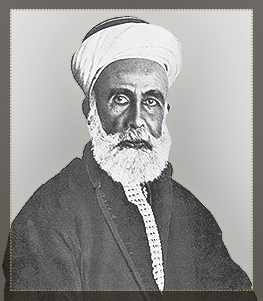Over the course of its development, the Arab nationalist consciousness always entailed a call for an independent Arab state, irrespective of its geographical framework, led by one of Mecca’s sharifs.
The oldest call for an independent state dates back to 1858. In a letter to the British ambassador in Istanbul on 31 July 1858, the British consul-general in Aleppo wrote: “It would also appear that the Mussulman population of Northern Syria harbours hopes of a separation from the Ottoman Empire and the formation of a new Arabian State under the sovereignty of the Shereefs of Mecca.”
The sharif of Mecca at the time was Mohammad bin Abdul Muin bin Awn, the founder of the Awn side of the Hashemites and the grandfather of Sharif Hussein bin Ali. He was sharif between 1827 and 1851. He was then removed from his position and banished to Istanbul over fears that his influence may increase. He was later reinstated between 1856 and 1858. During his banishment, his son Ali welcomed a baby boy in 1853, whom he named Hussein.
The call on the sharifs of Mecca to lead an Arab independence movement was frequently raised. In his book Umm Al Qura (Mother of Villages), Abd Al Rahman Al Kawakibi called for holding a conference in Mecca in 1898, chaired by one of Mecca’s leaders to examine the situation of Muslims and institute ways to ensure their awakening. He highlighted the high position in Islam that Arabs should take up, on account of their language, honour and noble lineage. “The Arabs of the peninsula are qualified to restore the glory of Islam, because divine providence has protected them from the moral depravity that has plagued the Turks,” he said. “Arabs are most suited to be a reference in religion and a source of strength for the Muslims; therefore, Ottomans should not be left in charge of the caliphate.”
Similarly, Naguib Azoury, in his book Le réveil de la nation arabe (The Awakening of the Arab Nation), published in French in 1905, urged Arabs to secede from the Ottomans and form their own independent state that extends from the Tigris and Euphrates to the Suez, and from the Mediterranean Sea to the Sea of Oman, provided that it be a free constitutional monarchy led by an Arab sultan.
Therefore, the Arab Revolt evidently originated from two sources:
First: The Arab nationalist consciousness represented in Arabs’ right to their own independent state.
Second: This is connected to the first source, and it is the mismanagement of the state by the Ottomans, especially in the period before the war, leading up to Turkey joining it alongside Germany. It can be said that the Arab ambition for independence and secession from the Ottoman state was proportional to the Ottoman policies of terrorism and oppression.


